Research
Person Re-identification
| Person Re-Identification using Kernel-based Metric Learning Methods | ||
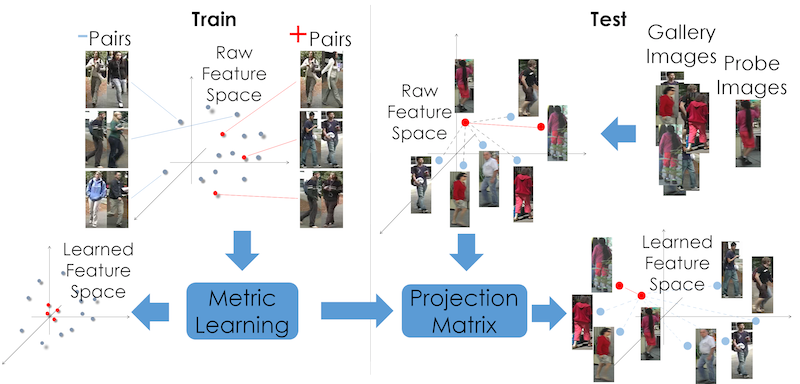 |
Re-identification of individuals across camera networks with limited or no overlapping fields of view remains challenging in spite of significant research efforts. In this paper, we propose the use, and extensively evaluate the performance, of four alternatives for re-ID classification: regularized Pairwise Constrained Component Analysis, kernel Local Fisher Discriminant Analysis, Marginal Fisher Analysis and a ranking ensemble voting scheme, used in conjunction with different sizes of sets of histogram-based features and linear, X2 and RBF-X2 kernels. Comparisons against the state-of-art show significant improvements in performance measured both in terms of Cumulative Match Characteristic curves (CMC) and Proportion of Uncertainty Removed (PUR) scores on the challenging VIPeR, iLIDS, CAVIAR and 3DPeS datasets. Fei Xiong, Mengran Gou, Octavia I. Camps, Mario Sznaier: Person Re-Identification using Kernel-based Metric Learning Methods. ECCV 2014 (PAGE, Bibtex) NEW: collection and short review for public re-id datasets. | |
Tracking
| The Way They Move: Tracking Targets with Similar Appearance | ||
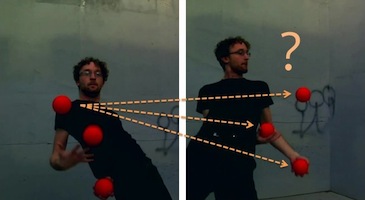 |
It is difficult to tell which target is which when targets look very similar. Their appearance does not help at all, but their motion does. Analyzing "the way they move" we can dissambiguate those similar targets and do more. Caglayan Dicle, Octavia I. Camps, Mario Sznaier: The Way They Move: Tracking Multiple Targets with Similar Appearance. ICCV 2013 (PDF, CODE, VIDEO) |
|
| Dynamic Context for Tracking behind Occlusions | ||
 |
In this paper,
a novel algorithm is proposed to estimate the location of a target while it is hidden due to occlusion. The main idea behind the algorithm is to use contextual dynamical cues from multiple supporter features which may move with the target, move independently of the target, or remain stationary. Fei Xiong, Octavia I. Camps, Mario Sznaier: Dynamic Context for Tracking behind Occlusions. ECCV (5) 2012: 580-593 (PDF, BibTex) |
|
| Dynamic Subspace-Based Coordinated Multicamera Tracking | ||
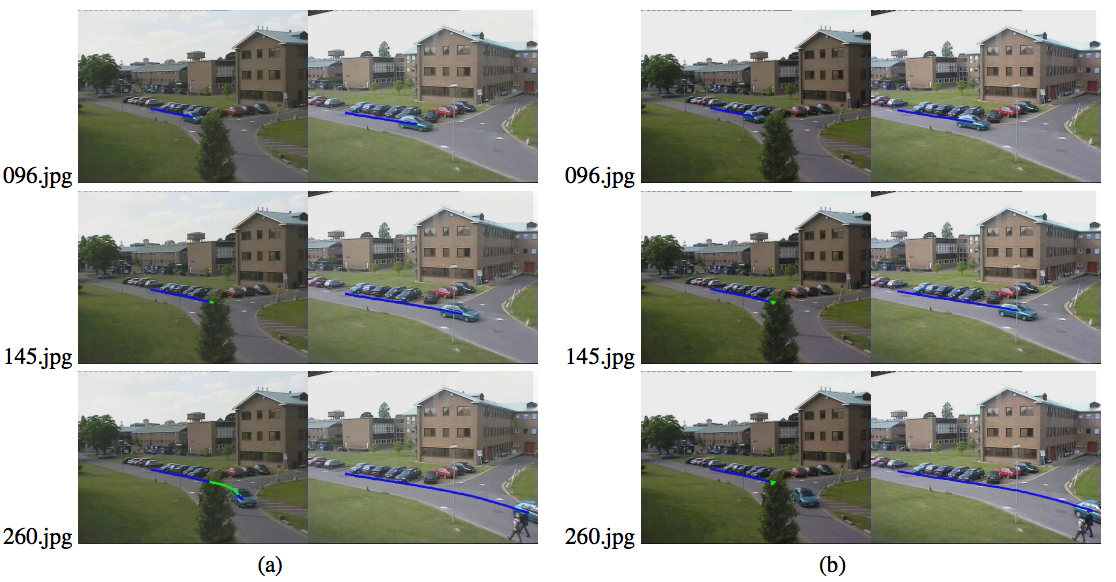 |
By exploiting both dynamical and geometrical constraints the proposed method can robustly handle substantial occlusion, without the need for performing 3D reconstruction, calibrated cameras or constraints on sensor separation. Mustafa Ayazoglu, Binlong Li, Caglayan Dicle, Mario Sznaier, Octavia I. Camps: Dynamic subspace-based coordinated multicamera tracking. ICCV 2011: 2462-2469 (PDF, BibTex) |
|
Activity Recognition
| Cross-view Activity Recognition using Hankelets | ||
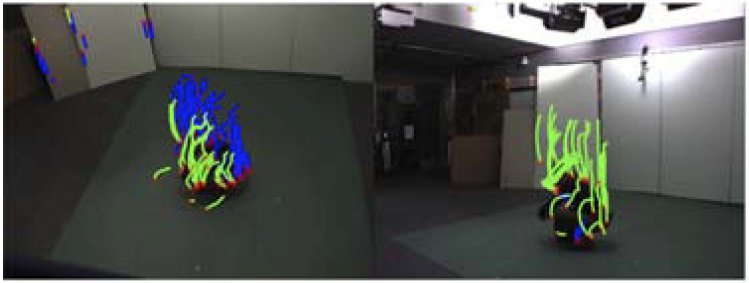 |
We introduce a new type of feature, the “Hankelet” that captures dynamic properties of short tracklets. While Hankelets do not carry any spatial information, they bring invariant properties to changes in viewpoint that allow for robust cross-view activity recognition, i.e. when actions are recognized using a classifier trained on data from a different viewpoint. Binlong Li, Octavia I. Camps, Mario Sznaier: Cross-view activity recognition using Hankelets. CVPR 2012: 1362-1369 (PDF, BibTex, CODE) |
|
|---|---|---|
| Activity Recognition using Dynamic Subspace Angles | ||
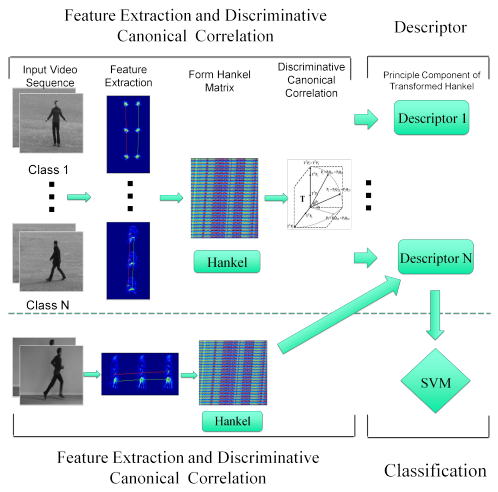 |
In this paper, we propose a new approach to exploit the temporal information encoded in the data. The main idea is to model activities as the output of unknown dynamic systems evolving from unknown initial conditions. Under this framework, we show that activity videos can be compared by computing the principal angles between subspaces representing activity types which are found by a simple SVD of the experimental data. Binlong Li, Mustafa Ayazoglu, Teresa Mao, Octavia I. Camps, Mario Sznaier: Activity recognition using dynamic subspace angles. CVPR 2011: 3193-3200 (PDF) |
|
Dimension Reduction
| Fast algorithms for structured robust principal component analysis | ||
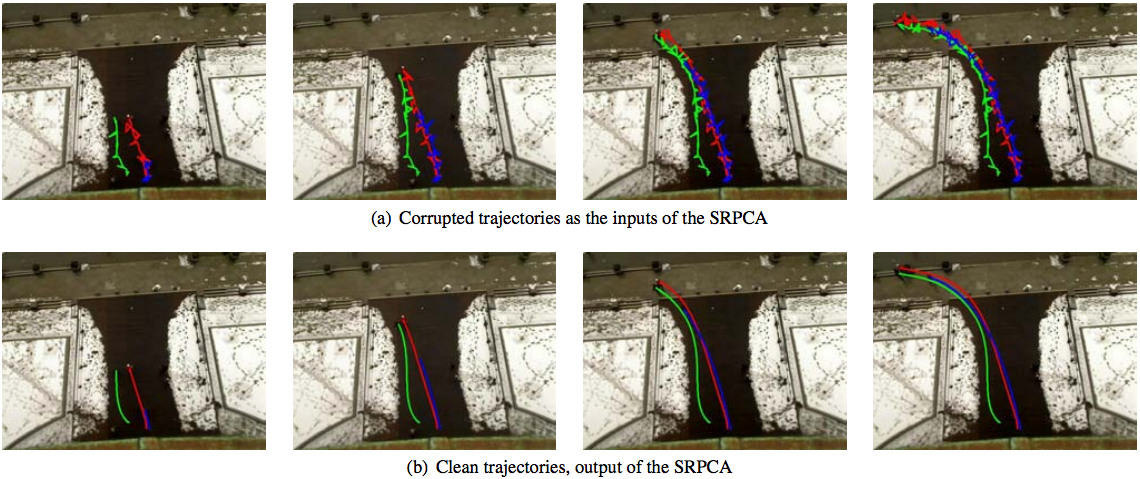 |
This paper shows that structured nuclear norm minimization problems can be efficiently solved by using an iterative Augmented Lagrangian Type (ALM) method that only requires performing at each iteration a combination of matrix thresholding and matrix inversion steps. Mustafa Ayazoglu, Mario Sznaier, Octavia I. Camps: Fast algorithms for structured robust principal component analysis. CVPR 2012: 1704-1711 (PDF, BibTex) |
|
|---|---|---|
| Low Order Dynamics Embedding for High Dimensional Time Series | ||
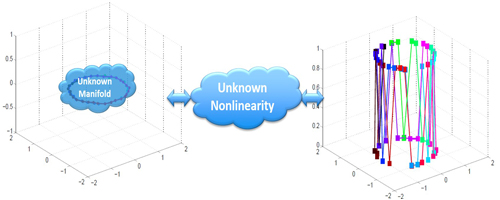 |
This paper considers the problem of finding low order nonlinear embeddings of dynamic data, that is, data characterized by a temporal ordering. Our main result is a semi-definite programming based manifold embedding algorithm
that exploits the dynamical information encapsulated in the temporal ordering of the sequence to obtain embeddings with lower complexity that those produced by existing algorithms, at a comparable computational cost. Fei Xiong, Octavia I. Camps, Mario Sznaier: Low order dynamics embedding for high dimensional time series. ICCV 2011: 2368-2374 (PDF, BibTex) |
|
